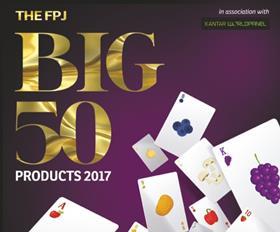
The FPJ Big 50 Products ranks the 50 best-selling fresh fruit and vegetable products by sales value, using Kantar Worldpanel data for the 52 w/e 21 May 2017.
46. Garlic

Recipe kits give garlic a boost
The trend for home cooking can take a large part of the credit for garlic’s ongoing positive sales growth, but it has been helped this year by the success of home delivery recipe kits. The growing popularity for brands such as Gousto and HelloFresh are helping more consumers to cook from scratch, with garlic as a staple of multiple recipe kits.
Volume growth is organic rather than price-driven, according to Colin Boswell of Isle of Wight producer The Garlic Farm, as garlic is becoming more accessible across more channels. “I don’t think garlic is particularly price-sensitive; people buy their garlic regardless of price. I think volume growth is organic, people are just buying more of it,” he explains. “Home recipe boxes are steadily taking off for us. Online sales are also increasing, and seed garlic is also showing quite strong growth for the grow-your-own market.”
This year a large garlic crop from China meant overall prices fell, says Boswell, but demand for European varieties has been largely unaffected. “We position ourselves in a different place to the Chinese. China serves a purpose in the market but it doesn’t have the same provenance value as European sources,” he adds. With growth potential in domestic and overseas markets, prospects remain strong for British garlic.
47. Blackberries
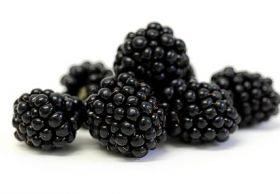
Value: £36.8m (+19.2%) Volume: 3.1m kg (+15.3%)
Sweet success for blackberries
Blackberries achieved one of the highest rates of sales growth in this year’s Big 50, with sales up almost 20 per cent – albeit from a relatively small base. Berry Gardens’ chief executive Jacqui Green puts this down to the better availability of sweet varieties, such as Driscoll’s Victoria, boosting frequency of purchase, up 18.6 per cent.
This has encouraged Berry Gardens to invest in glasshouse production and increased planting. “Several of our growers have introduced glasshouse production of Driscoll’s Victoria and this year will be able to maintain good quality supply until late autumn,” adds Berry Gardens’ chairman Alastair Brooks. The growing group has also been promoting the variety through a specific PR campaign, which includes social media, a recently launched website and recipes developed by chef and food journalist Rosie Birkett.
Citing Kantar data, Charlotte Knowles of BerryWorld says Lidl has been the biggest contributor to the category’s growth, adding £1.1m in revenues. Meanwhile, Morrisons has tried to entice people into the category by including three free blackberries in the corner of each 150g pack of raspberries.
The blackberry market still has a long way to go but with the emergence of sweeter product these traditionally tart berries are bursting with fresh potential.
48. Kale
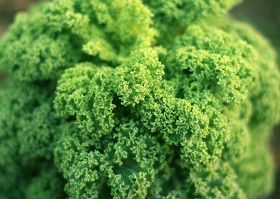
Coloured kale offers fresh growth
The health trend continues to power the popularity of kale, but growers and suppliers are starting to look at where the next growth will come from. One of these areas is different-coloured varieties. George Beach of Mudwalls Farm says red kale is an attractive product with good flavour, but it currently sees much lower demand than green or black varieties.
“We’re seeing good demand for kale, but we’d like to see this extend to other coloured varieties,” he says. “The message is don’t leave the red one out. It makes a pretty product. A mix between green and red also enhances the product and offers a point of difference.”
Recent high temperatures didn’t affect kale as much as other brassica products, says Beach, as it is a hardy crop in both hot and cold weather. “Where the hot temperatures do affect the category is lowering demand, as people might not choose kale-based dishes,” he adds. Hot temperatures may well have benefited the juice and smoothie markets, an ongoing growth area for kale. Julian Pitts of Veg UK says the younger “gym-going” generation is helping to grow this trend for healthy veg-based drinks and he is confident of continued growth.
49. Swede
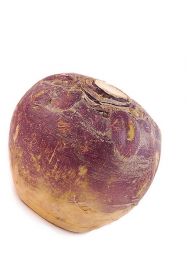
Swede prep key to growth
Value: £34.1m (-1.1%) Volume: 25.6m kg (-16.5%)
Convenience is the light at the end of the tunnel for the swede business, where a smaller crop and fewer promotions this year led to a steep 16.5 per cent drop in volume sales.
Retailers who are focusing on price are seeing better swede sales than those who are less aggressive, according to managing director of swede grower RK Drysdale, Chris Keenan, while promoting convenience and versatility will help gain future growth. “We’re continuing to look at convenience measures such as shredding or dicing, so it can be used in a variety of ways,” he says. “There’s been a long-term decline in swede sales because it’s a more difficult vegetable to prepare, and people are more into convenience.”
To this end, Drysdales has developed a shredded swede noodle alternative, tapping into the trend for butternut squash noodles, which Keenan says should be in retailers ready for the winter ranges. “We can’t expect people to suddenly start peeling swede again. It’s up to us to make swede convenient,” he adds.
The unusually severe volume declines can be explained by low sunlight hours resulting in a smaller crop, which meant that a few promotions were missed off, adds Keenan.
Swede hasn’t lost favour among loyal fans; it’s just a case of enticing new consumers into the category.
50. Grapefruit
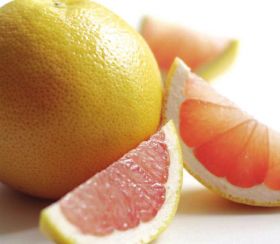
Grapefruit’s resurgence continues
After a sales boom in 2015-16, grapefruit’s renaissance has stabilised this year but the outlook remains positive, with seven of the top nine retailers recording growth in the product.
“As with the majority of fruit categories during 2017, retail price inflation has led to the loss of a few households buying into the category,” says Capespan’s category development manager Alastair West, “but this has been countered by growth in the number of purchase occasions.”
The UK market remains focused on red and white grapefruit varieties, according to Capespan’s John Hopkins, but there is a market opportunity to grow pink varieties, currently more popular in Mediterranean markets. Newer sources such as Peru, Honduras and Uruguay are strengthening availability but the UK market still needs time to adapt to the appearance of more skin-blemished sub-tropical fruit.
In terms of varietal development, Stuart Ansell of MMG Citrus says there has been a lot of work done to lower grapefruit’s acidity level in recent years. This shift, along with the health boom, has driven the category’s resurgence, Ansell believes, but he admits he has been surprised by the sales growth in the past few years. “I’m not sure whether grapefruit has the potential to carry on growing,” he admits.



